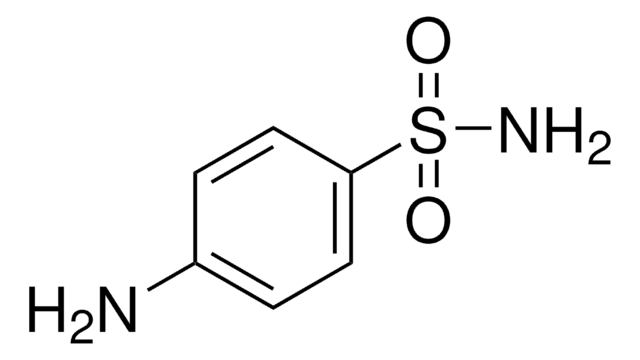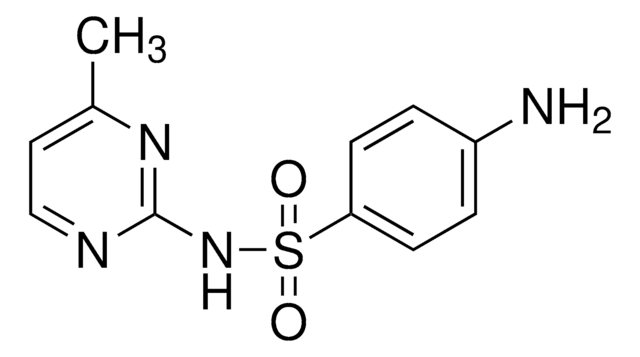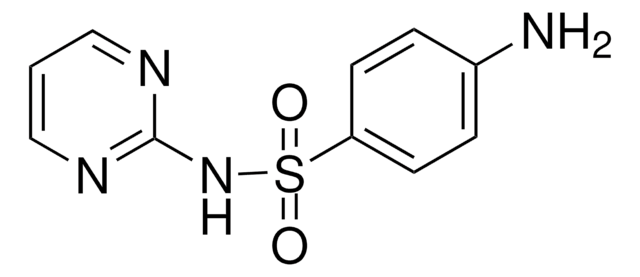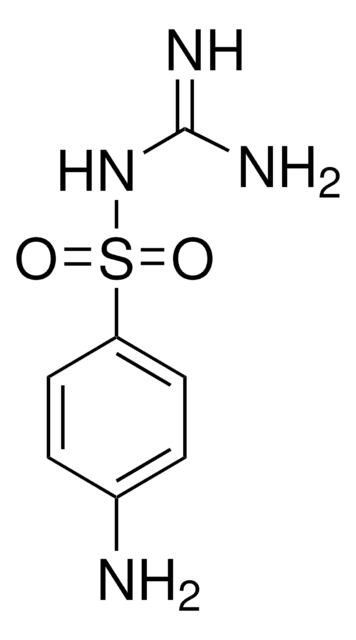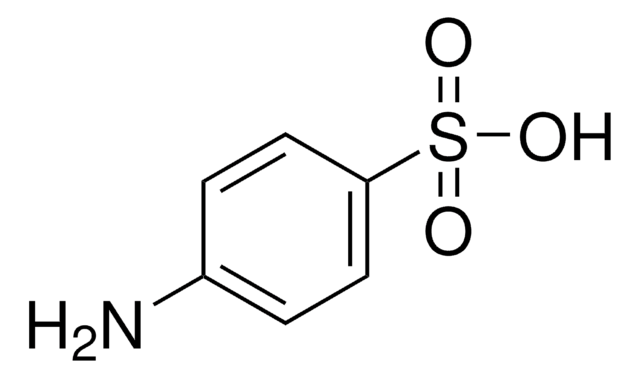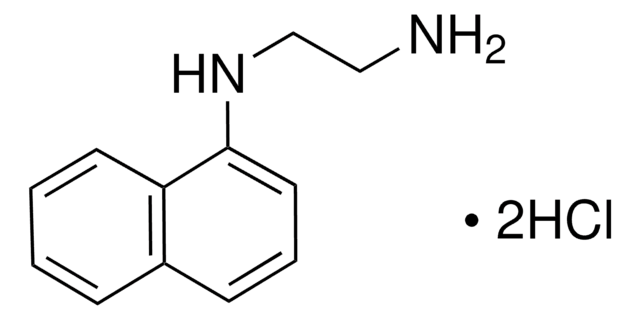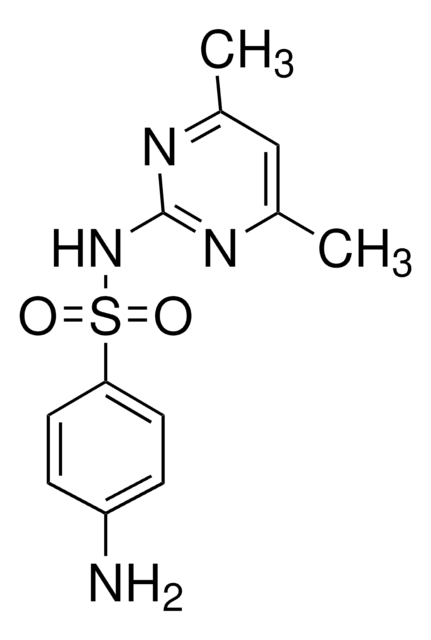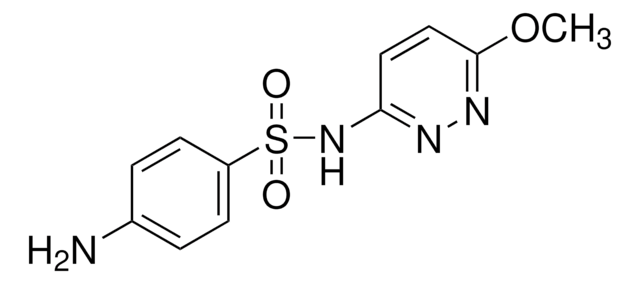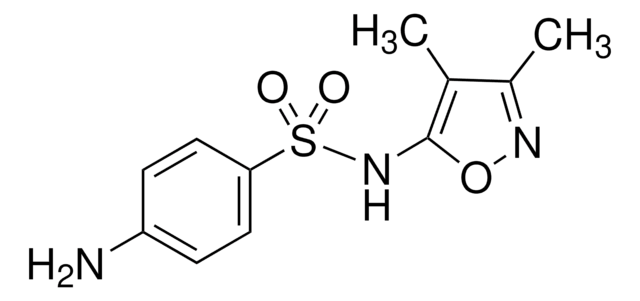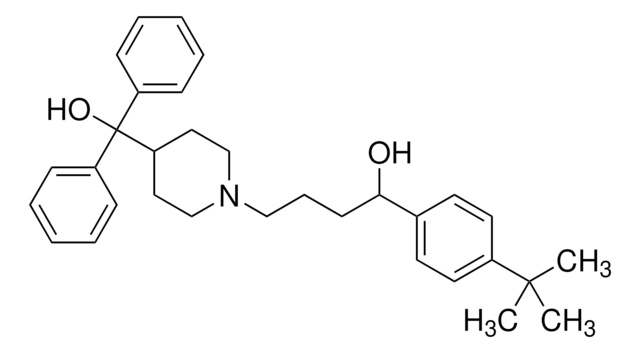S8751
Sulfaguanidine
Synonym(s):
4-Amino-N-(aminoiminomethyl)benzenesulfonamide, 4-Amino-N-guanylbenzenesulfonamide
About This Item
Recommended Products
biological source
synthetic (Organic)
Quality Level
form
powder
color
white to off-white
solubility
1 M HCl: soluble 50 mg/mL
antibiotic activity spectrum
Gram-negative bacteria
Gram-positive bacteria
mode of action
DNA synthesis | interferes
enzyme | inhibits
SMILES string
NC(=N)NS(=O)(=O)c1ccc(N)cc1
InChI
1S/C7H10N4O2S/c8-5-1-3-6(4-2-5)14(12,13)11-7(9)10/h1-4H,8H2,(H4,9,10,11)
InChI key
BRBKOPJOKNSWSG-UHFFFAOYSA-N
Gene Information
human ... F2(2147) , PRSS1(5644)
Looking for similar products? Visit Product Comparison Guide
Related Categories
General description
Application
Biochem/physiol Actions
Other Notes
signalword
Warning
hcodes
Hazard Classifications
Eye Irrit. 2 - Skin Irrit. 2 - STOT SE 3
target_organs
Respiratory system
wgk_germany
WGK 3
ppe
dust mask type N95 (US), Eyeshields, Gloves
Certificates of Analysis (COA)
Search for Certificates of Analysis (COA) by entering the products Lot/Batch Number. Lot and Batch Numbers can be found on a product’s label following the words ‘Lot’ or ‘Batch’.
Already Own This Product?
Find documentation for the products that you have recently purchased in the Document Library.
Customers Also Viewed
Our team of scientists has experience in all areas of research including Life Science, Material Science, Chemical Synthesis, Chromatography, Analytical and many others.
Contact Technical Service